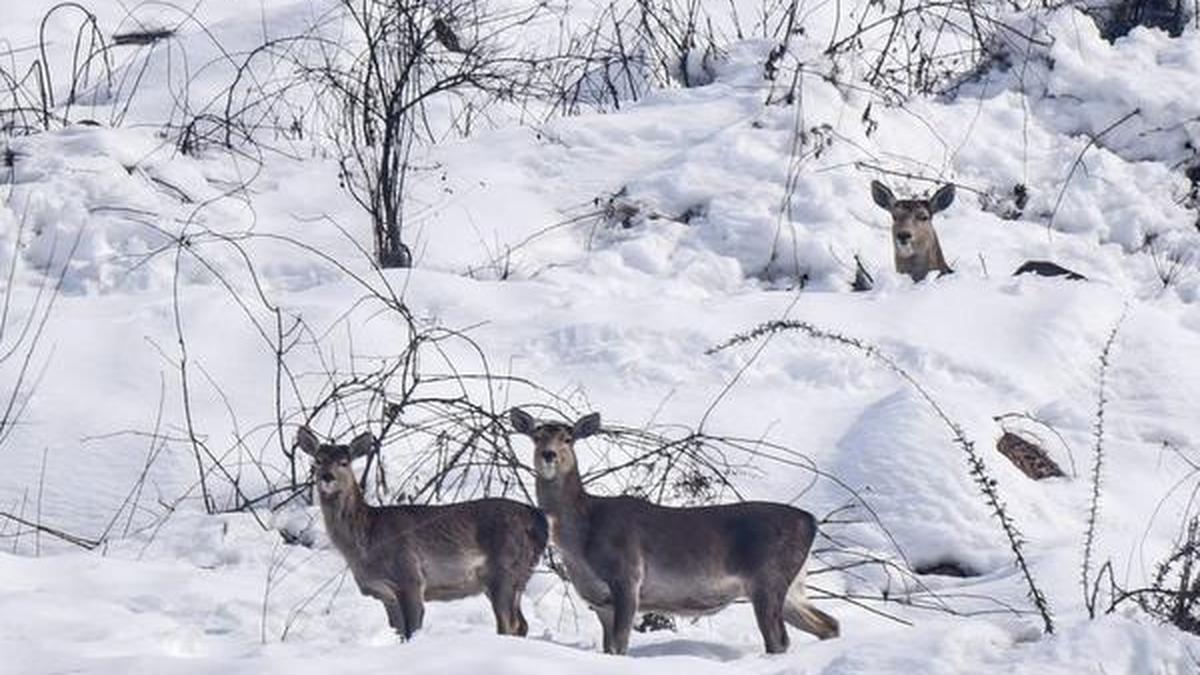
Humans putting Himalayan Hangul Deer under stress during mating, birthing seasons
The Hindu
CCMB scientists study Hangul Deer mating & birthing seasons in Himalayas for conservation, highlighting need to minimize human disturbances.
Scientists at the CSIR-Centre for Cellular & Molecular Biology (CCMB) have highlighted the need for minimising human disturbances such as livestock grazing and herder movement during the mating and birthing seasons for population recovery of the Hangul Deer living in the Himalayas.
They deduced this after conducting an extensive research led by chief scientist G. Umapathy and his team at Laboratory for the Conservation of Endangered Species (LaCONES) to study the reproductive patterns and physiology of the deer species to help in their conservation.
The study, taken up as part of the National Mission on Himalayan Studies, had scientists examining patterns of reproductive and stress hormones in the free-ranging Hangul populations in the Kashmir Himalayas using non-invasive faecal hormone analysis.
The scientist team, which included Tanshree Srivastava, Javaid Hameed, Vinod Kumar, Harika Segu, Sneha Narayan, Moomin John and Karthikeyan Vasudevan, spent more than a year (2019-20) in the cold upper Himalayan region to study the animals whose numbers have dwindled to just 300-350 now.
The research team found the male Hangul to be exhibiting a synchronised rutting or mating season from October to December, while the females showed dispersed oestrus cycles, suggesting multiple opportunities for conception, explained Dr. Umapathy.
The Elevated Progesterone Levels (FPM) in females from January to March indicated pregnancy, with a sharp decline in April suggesting synchronised parturition or birthing. Testosterone levels in males were positively correlated with stress, confirming rut-related competition among males. Both males and females experienced increased glucocorticoid levels interpreted as stress during mating. Females showed additional stress peaks around parturition (birthing) of April-May.
Another secondary stress peak was observed in May for both sexes, which the LaCONES chief scientist, said could be linked to disturbances from migratory livestock herders and their dogs. Food availability was negatively correlated with progesterone levels, confirming that new births or parturition coincides with the peak forage availability, he said.

Hyderabad: Car owner along with vehicle modification shop booked for unauthorised vehicle alteration
Jubilee Hills police book case against owner of illegally modified luxury car in Hyderabad, facing legal action












